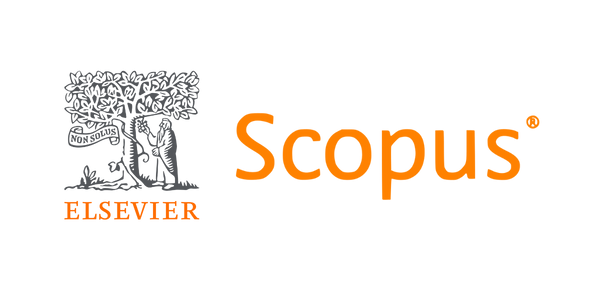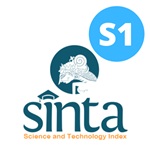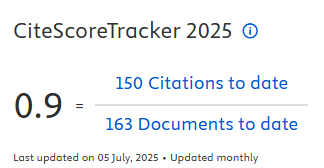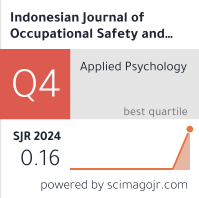A Conceptual Framework for Analyzing Occupational Safety and Health Program Investment: Hierarchy of Controls-Based Approach

Introduction: The Frequency Rate (FR) of workplace accidents in 2019 was recorded at 3.4, meaning that for every million work hours, there were 3.4 cases of workplace accidents. In 2020, the FR increased to 3.6, and in 2021, it further rose to 3.8. Therefore, companies need to make improvements to reduce the number of work accidents by investing some resources in the Occupational Safety and Health (OSH) investment program. This study aims to develop a conceptual framework for analyzing the OSH investment program by considering its benefits and costs. Methods: Hierarchy of controls was used in this study to classify and identify OSH programs, OSH investment items, and OSH implementation options. The in-depth interview was also conducted by involving several experts to formulate and justify the items in the conceptual framework. Result: This study resulted in 2 main aspects, namely carefully chosen OSH experts to ensure reliable and relevant information collected and involving a detailed analysis of different data levels (3, 2, and 1) along with a breakdown of costs for each level 1 data. Conclusion: The finding of this study is a conceptual framework to help and direct companies in order to analyze the selection of OSH programs, OSH investment items, and OSH implementation options by prioritizing the hierarchy of controls.
Akcay, C. et al. (2018) ‘Estimating OHS Costs of Building Construction Projects based on Mathematical Methods’, Safety Science, 109, pp. 361–367. Available at: https://doi.org/10.1016/J.SSCI.2018.06.021.
Aljbour, S. (2022) ‘Occupational Accidents and Work Injuries in Jordan’s Economic Sectors between 2010 and 2019’, Jordanian Journal Of Engineering And Chemical Industries (JJECI), 5(2), pp. 32–45. Available at: https://doi.org/10.48103/JJECI562022.
Aminian, O. et al. (2023) ‘Association of the Working Environment Noise with Occupational Stress in Industrial Workers’, Journal of Public Health (Germany), 31(6), pp. 979–984. Available at: https://doi.org/10.1007/S10389-021-01605-Y/TABLES/3.
Beiderbeck, D. et al. (2023) ‘Preparing, conducting, and analyzing Delphi surveys: Cross-disciplinary practices, new directions, and advancements’, MethodsX, I, pp. 1–20. (Accessed: 11 August 2024).
Darabont, D.C. et al. (2018) ‘Considerations on Improving Occupational Health and Safety Performance in Companies Using ISO 45001 Standard’, Environmental Engineering and Management Journal, 17(11), pp. 2711–2718. Available at: http://www.eemj.icpm.tuiasi.ro/;http://www.eemj.eu (Accessed: 16 February 2024).
Emoghene, O. and Nonyelum, O.F. (2017) ‘Information Gathering Methods and Tools: A Comparative Study’.
Ewertowski, T. and Butlewski, M. (2021) ‘Development of a Pandemic Residual Risk Asessment Tool for building Organizational Resilience within Polish Enterprises’, International Journal of Environmental Research and Public Health, 18(13). Available at: https://doi.org/10.3390/ijerph18136948.
Hanea, A. et al. (2021) Expert Judgement in Risk and Decision Analysis. Edited by A.M. Hanea et al. Cham: Springer International Publishing (International Series in Operations Research & Management Science). Available at: https://doi.org/10.1007/978-3-030-46474-5.
Hopkin, P. (2017) Fundamentals of Risk Management: Understanding, Evaluating and Implementing Effective Risk Management. 4th Edision. London: The Institute of Risk Management.
Horhota, L. et al. (2020) ‘Cost-Benefit Analysis (Cba)-Key Factor In Evaluation Of Investment Projects’. Journal of Information Systems & Operations Management, 16(1), pp, 88-101.
Jenderal Pembinaan Pengawasan Ketenagakerjaan Dan Keselamatan Dan Kesehatan Kerja Kementerian Ketenagakerjaan, D.R. (2022) Profil Keselamatan dan Kesehatan Kerja Nasional Indonesia Tahun 2022.
Lee, J. et al. (2020) ‘Implementation of ISO45001 Considering Strengthened Demands for OHSMS in South Korea: Based on Comparing Surveys Conducted in 2004 and 2018’, Safety and Health at Work, 11(4), pp. 418–424. Available at: https://doi.org/10.1016/J.SHAW.2020.08.008.
Malinda, A. et al. (2022) Benefits of Implementing ISO 45001 Occupational Health and Safety Management Systems and Implementation Suggestion in the Defense Industry: A Literature Review, Journal of Industrial Engineering & Management Research. Available at: http://www.jiemar.org.
Margaret R. Roller (2019) The In-Depth Interview Method: 12 Articles on Design & Implementation.
Matias, O. et al. (2022) ‘The Development Trend of the Occupational Health and Safety in the Context of ISO 45001:2018’. Available at: https://doi.org/10.3390/standards2030021.
Mustard, C.A. and Yanar, B. (2023) ‘Estimating the Financial Benefits of Employers’ Occupational Health and Safety Expenditures’, Safety Science, 159, p. 106008. Available at: https://doi.org/10.1016/j.ssci.2022.106008.
National Institute for Occupational Safety and Health (2023) Hierarchy of Controls | NIOSH | CDC, Centers for Disease Control and Prevention. Available at: https://www.cdc.gov/niosh/topics/hierarchy/default.html (Accessed: 23 October 2023).
Purohit, D.P. et al. (2018) ‘Hazard Identification and Risk Assessment in Construction Industry’, International Journal of Applied Engineering Research, 13(10), pp. 7639–7667. Available at: http://www.ripublication.com7639 (Accessed: 8 July 2023).
Purwanto, A. et al. (2020) ‘The Effect of Implementation Integrated Management System ISO 9001, ISO 14001, ISO 22000 and ISO 45001 on Indonesian Food Industries Performance’, TEST (Engineering & Management), 82, pp. 14054–14069.
Ramaganesh, M. et al. (2021) ‘Ergonomics hazard analysis techniques- A technical review’, Materials Today: Proceedings, 46, pp. 7789–7797. Available at: https://doi.org/10.1016/J.MATPR.2021.02.329.
Reese, C.D. (2008) ‘Occupational Health and Safety Management’, . Available at: https://doi.org/10.1201/B12822.
Riaño-Casallas, M.I. and Tompa, E. (2018) ‘Cost-Benefit Analysis of Investment in Occupational Health and Safety in Colombian Companies’, American Journal of Industrial Medicine, 61(11), pp. 893–900. Available at: https://doi.org/10.1002/ajim.22911.
Roze, A.M. et al. (2021) ‘Challenges of Implementing Occupational Health Services (OHS) in Malaysia -Perspective of Occupational Health Doctors’, Pertanika Journal of Social Sciences and Humanities, 29(2), pp. 993–1010. Available at: https://doi.org/10.47836/PJSSH.29.2.14.
Rutakumwa, R. et al. (2020) ‘Conducting in-depth interviews with and without voice recorders: a comparative analysis’, Qualitative Research, 20(5), pp. 565–581. Available at: https://doi.org/10.1177/1468794119884806.
Simola, K., Mengolini, A. and Bolado-Lavin, R. (2005) ‘Formal Expert Judgement: An Overview’, Journal from Institute for Energy [Preprint]. Available at: http://ie.jrc.cec.eu.int/ (Accessed: 11 January 2024).
Sudiarno, A., et al. (2021). Health and safety implementation in Indonesia and risk of COVID-19. International Journal of Public Health Science (IJPHS), pp. 68~76.
Sudiarno-b, A., Amanullah, D. A., and Akbar, R. A. (2022). The Measurement of Evacuation Effectiveness Regarding Dynamic Evacuation Routing System (DERS) in High-Rise Building Using Virtual Reality Simulation. International Journal of Safety and Security Engineering, pp. 115-122.
Sudiarno-c, A., et al. (2024). Investigating the future study area on VR technology implementation in safety training: A systematic literature review. Journal of Safety Science and Resilience, 235-248.
Tavory, I. (2020) ‘Interviews and Inference: Making Sense of Interview Data in Qualitative Research’, Qualitative Sociology, 43(4), pp. 449–465. Available at: https://doi.org/10.1007/S11133-020-09464-X/METRICS.
Trisna, N., Mahessya, R.A. and Elva, Y. (2022) ‘Analisis Kelayakan Suatu Produksi Usaha UD. Pelita Kita Dengan Metode Benefit Cost Ratio’, Journal Of Science And Social Research, 5(2), pp. 297–301. Available at: https://doi.org/10.54314/JSSR.V5I2.870.
Turnham, H.L. et al. (2023) ‘As Low as Reasonably Practicable (ALARP): A Moral Model for Clinical Risk Management in the Setting of Technology Dependence’, Journal of Medical Ethics, 0, pp. 1–4. Available at: https://doi.org/10.1136/JME-2023-109111.
Yılmaz, M. and Kanıt, R. (2018) ‘A practical Tool for Estimating Compulsory OHS Costs of Residential Building Construction Projects in Turkey’, Safety Science, 101, pp. 326–331. Available at: https://doi.org/10.1016/J.SSCI.2017.09.020.
Zeira, J. (1990) ‘Cost Uncertainty and the Rate of Investment’, Journal of Economic Dynamics and Control, 14(1), pp. 53–63. Available at: https://doi.org/10.1016/0165-1889(90)90005-2.

This work is licensed under a Creative Commons Attribution-NonCommercial-ShareAlike 4.0 International License.

In order to be accepted and published by The Indonesian Journal of Occupational Safety and Health, Author(s) who submit an article should complete all the review process. The copyright of received articles assigned to the The Indonesian Journal of Occupational Safety and Health and Department of Safety and Health, Universitas Airlangga as publishers of the journal. The intended copyright includes the rights to publish articles in various forms (including reprints).
The Editorial Team of The Indonesian Journal Of Occupational Safety and Health and Department of Safety and Health strive to ensure that no errors occur in the articles that have been published, both data errors and statements in the article.
Users of this website will be licensed to use materials from this website following the Creative Commons Attribution-NonCommercial-ShareAlike 4.0 International License. No fees charged. Please use the materials accordingly.
------------------------------------------------------------------------------------------------------------------------------------------------------------------------------------------
Attribution ” You must give appropriate credit, provide a link to the license, and indicate if changes were made. You may do so in any reasonable manner, but not in any way that suggests the licensor endorses you or your use.
NonCommercial ” You may not use the material for commercial purposes.
ShareAlike ” If you remix, transform, or build upon the material, you must distribute your contributions under the same license as the original.







 How to Submit Articles in OJS
How to Submit Articles in OJS

























